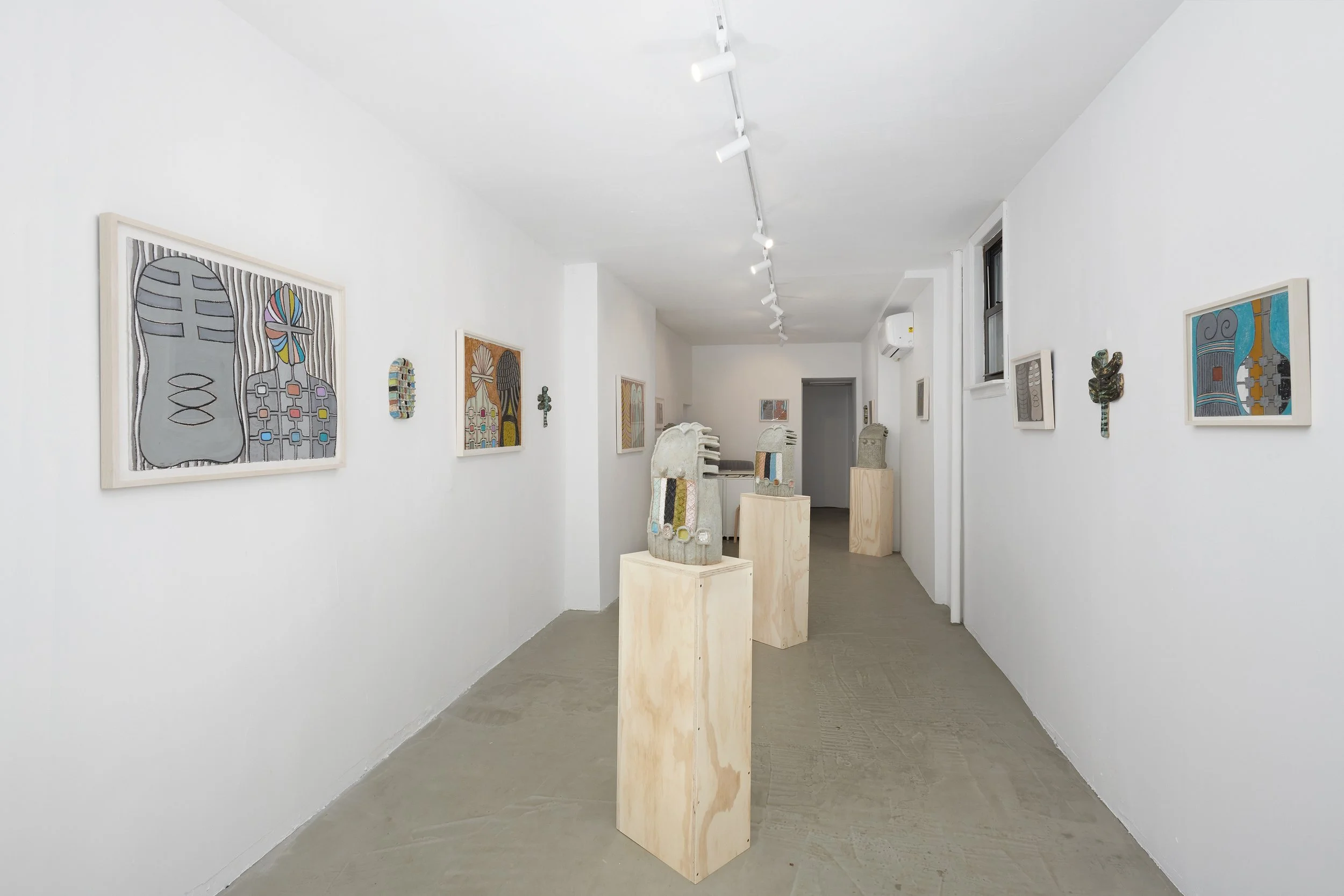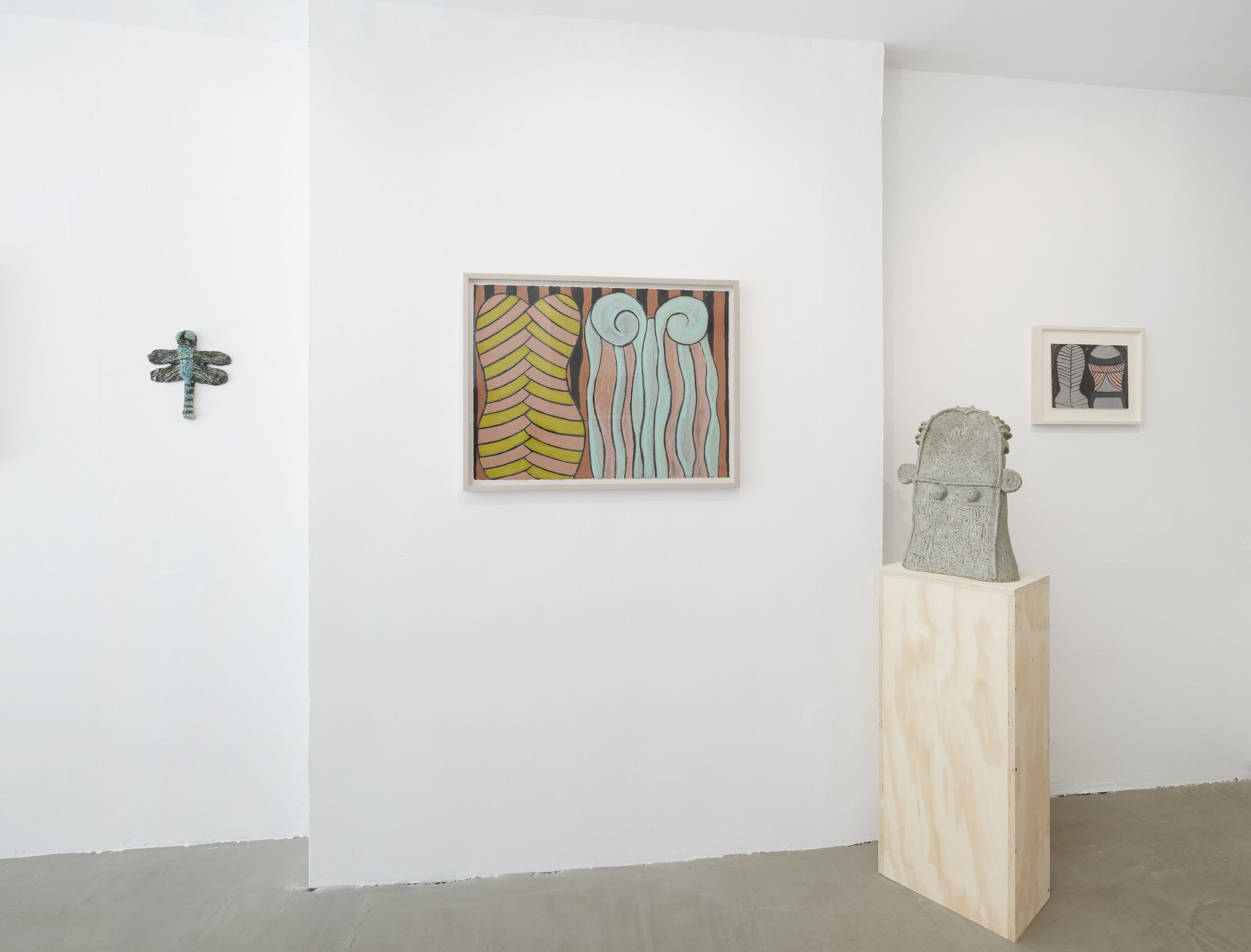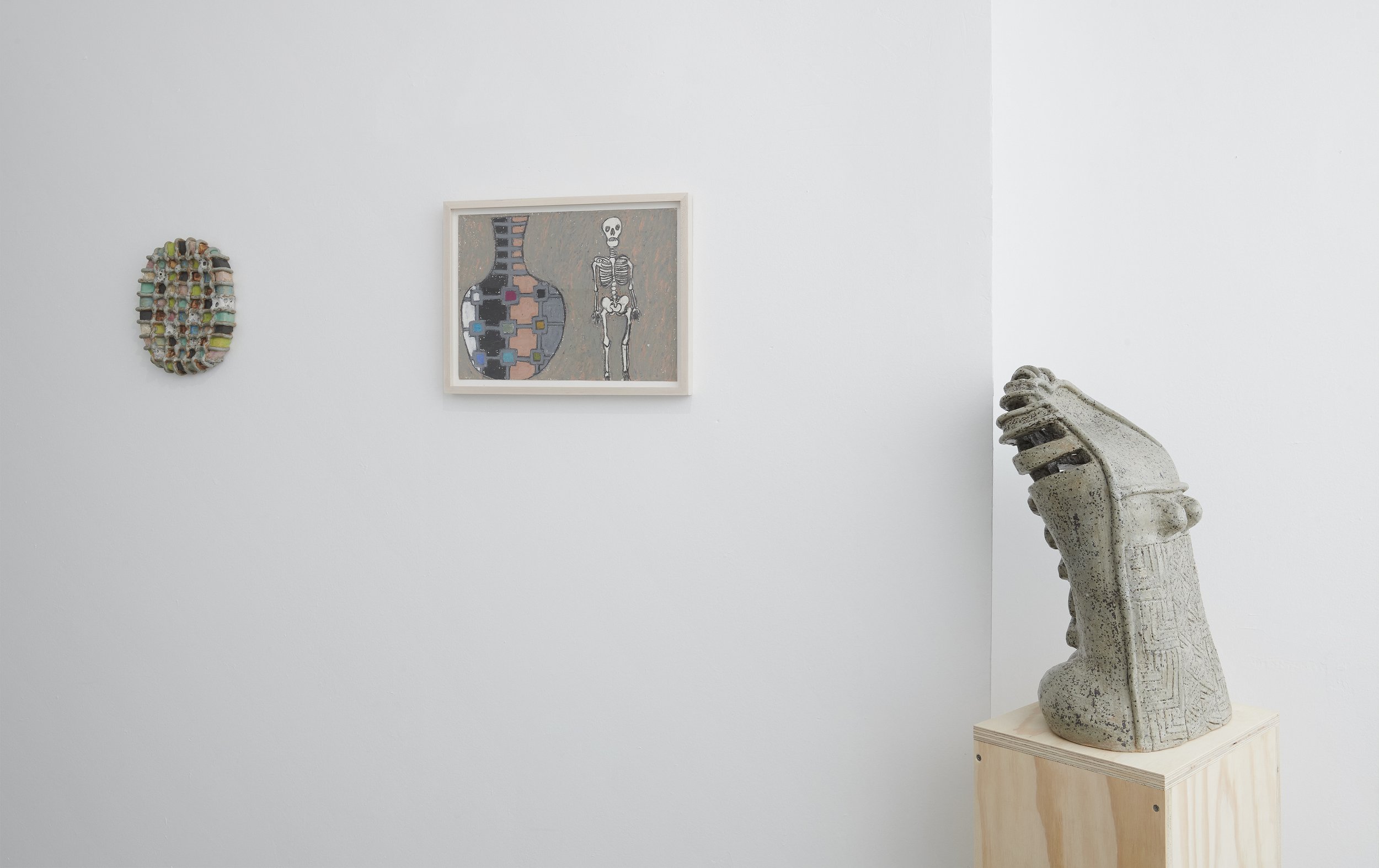Elisa Soliven’s Nagas: Tantric Maps and the Subtle Body
Wells Chandler October 25. 2025
Installation view of Hybrid House at McBride/Dillman New York, NY
In Italo Calvino’s Cosmicomics, the spiral is both a cosmic structure and a narrative device —the way life remembers itself through movement. In The Spiral, Calvino writes from the perspective of a prehistoric mollusk, describing the slow, repetitive labor of secreting calcium to form a shell —a gesture that is both a biological necessity and a creative act. Calvino’s mollusk narrator is an artist, a being that creates form out of itself. The mollusk chronicles, “Every turn of the spiral was a memory of the preceding one.” Its shell becomes an externalized record of inner life, a metaphor for consciousness arising through a material process.
Installation view of Hybrid House at McBride/Dillman New York, NY
Elisa Soliven’s hand-built ceramics perform a twin gesture. The five horseshoe crab busts populating her exhibition Hybrid House at McBride/Dillman are informed by a molted horseshoe crab shell encountered at Plumb Beach in Brooklyn, NY. What appears as armor in Soliven’s busts is, in fact, a gesture of letting go. It is through surrender, vulnerability, and softening that wholeness is restored. Soliven’s exoskeleton armor is porous and responsive –protective only insofar as it guides transformation. Ambiguous breasts empathically gaze –round as saucers– their eyes wide open, innocent, and tender like a child. Sparingly adorned in Wisdom Buddha colors and tattoo line work, her torsos embody the generative moment when shedding yields to renewal, exposing the gestational, receptive space within. Evoking the aquatic, her gilled busts conjure nagas –wise serpentine beings whose fluid, otherworldly anatomies recall the deep intelligence of life beyond human constraints. Each piece also reads like an ancient artifact, a relic of accumulated memory and ritual, where myth and imagination crystallize into a body that is at once familiar and uncanny.
Installation view of Hybrid House at McBride/Dillman New York, NY
An undoing of the self would be a total remembering —the recollection of all of one’s dreams at once. To restore them would be an act of power: their unspooling, event by event, an encounter with the alpha and the omega. In Soliven’s sculptural work, this re-membering is a kind of alchemical archaeology. Clay retains memory, fossilizes touch, and preserves a lineage as though every imprint and coil were a layer in the sediment of consciousness. As a palimpsest, clay is the crucible through which matter remembers itself. Ceramics as a process becomes a metaphor for psychic transformation —the old self hardens and splits so the new can emerge. Fire integrates ordeal, allowing for illumination.
Elisa Soliven “Torso & Spiral Body” (2025) oil pastel, charcoal, oil paint on paper 22 × 30 inches
Soliven’s ceramics and drawings are concerned with the great work —the realization of a self that is larger than the limitations of the body and restrictive stories told by the ego. This process involves the union of opposites. Mirroring is structural in Soliven’s drawings, aiding in integration. In her works on paper, Soliven treats the pairing of amphoric vessels, skeletons, leaves, armor, and Corinthian columns as tantric anatomical maps. Bifurcated along a central axis, they operate as a nervous system –suggesting the Ida and Piṅgalā, the dual subtle channels through which energy ascends. Each side vibrates in dialogue with its partner. The two pillars of the High Priestess card— Boaz and Jachin —also come to mind. The drawings position the viewer standing at the threshold of knowledge and nonduality. Balance is a central theme across suits in the second card of the tarot, which mediates polarity and receptivity. Through doubling, Soliven’s work becomes a ritual apparatus: the self reflected in the other, consciousness mirrored in matter. Her drawings are instructions for psychic and material metamorphosis. Relational transformation arises through mirroring —the capacity to see oneself in the other, and the other within oneself. The space between them —the void, the axis, the spiral —is the nexus where change happens.
Installation view of Hybrid House at McBride/Dillman New York, NY
In Soliven’s installation her busts reverently face Aster Body Totem –a large ambitious ceramic work topped with a spiral finial, composed of five stacked columns bejeweled with a keloid-like map of colored disks suggestive of nadis —the architecture of the subtle body. The Sushumna is the central energy channel in yogic and Tantric traditions. Running along the spine and through the chakras, it is the primary pathway for spiritual awakening. By balancing the Ida and Piṅgalā through meditation, Kundalinī energy rises from the base of the spine to the crown of the head leading to liberation and higher consciousness. The structure of Soliven’s sculpture suggests a being simultaneously dissolving into rainbow light and coalescing lunar with solar —a vessel whose body contains multiplicity and complexity. In Aster Body Totem, Soliven gives form to the paradox of contraction and expansion — the spiral that is both finite and infinitely vast, serving as a bridge for both the microcosmic and macrocosmic. Inward implosion and outward flowering evoke the primordial matrix through which all forms are generated, destroyed, and reborn. Hybrid House is a devotional remembrance that we are ancient and future, container and conduit, self and other.
Installation view of Hybrid House at McBride/Dillman New York, NY
Elisa Soliven: Hybrid House at McBride/Dillman (195 Henry Street New York, NY 10002) through October 26.





